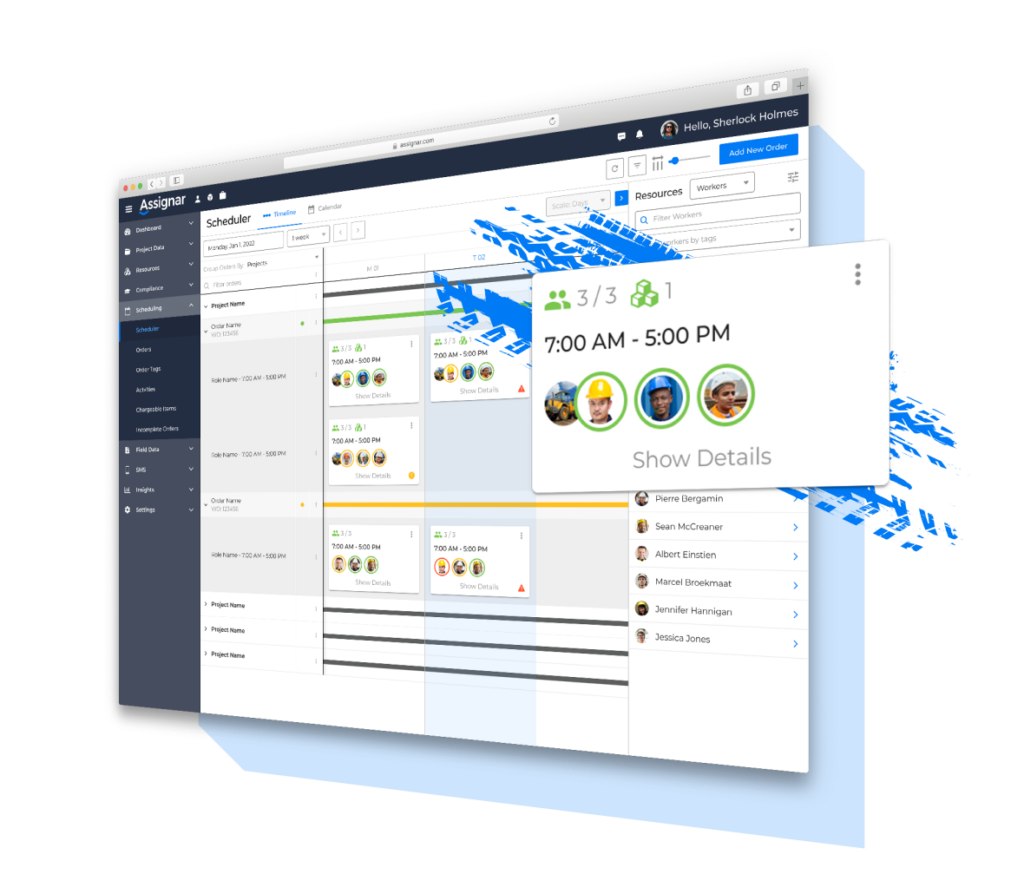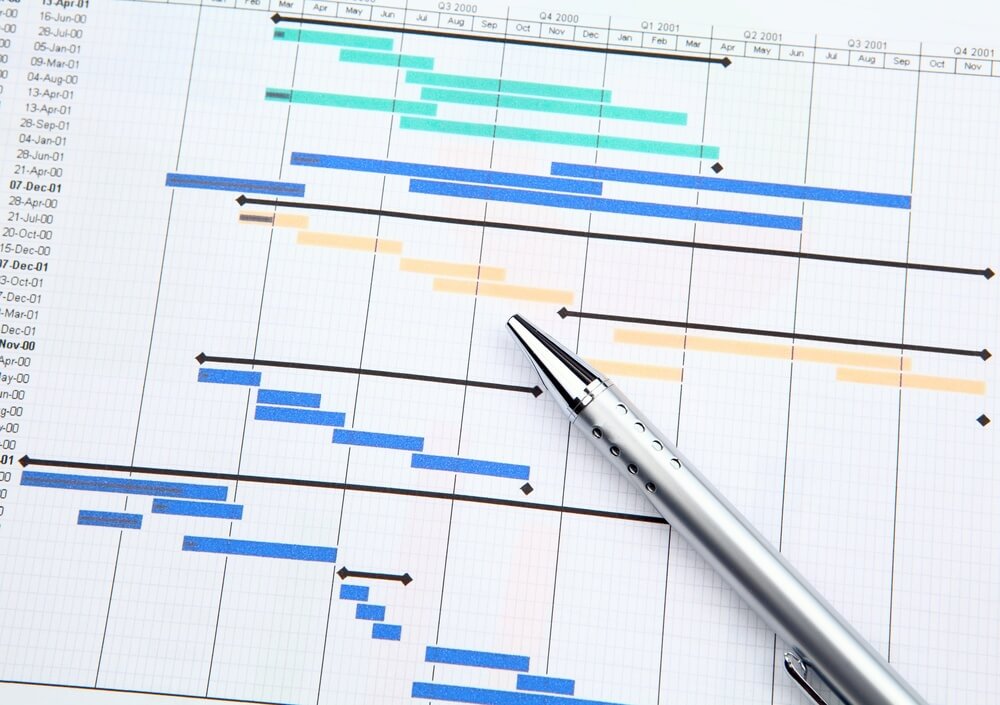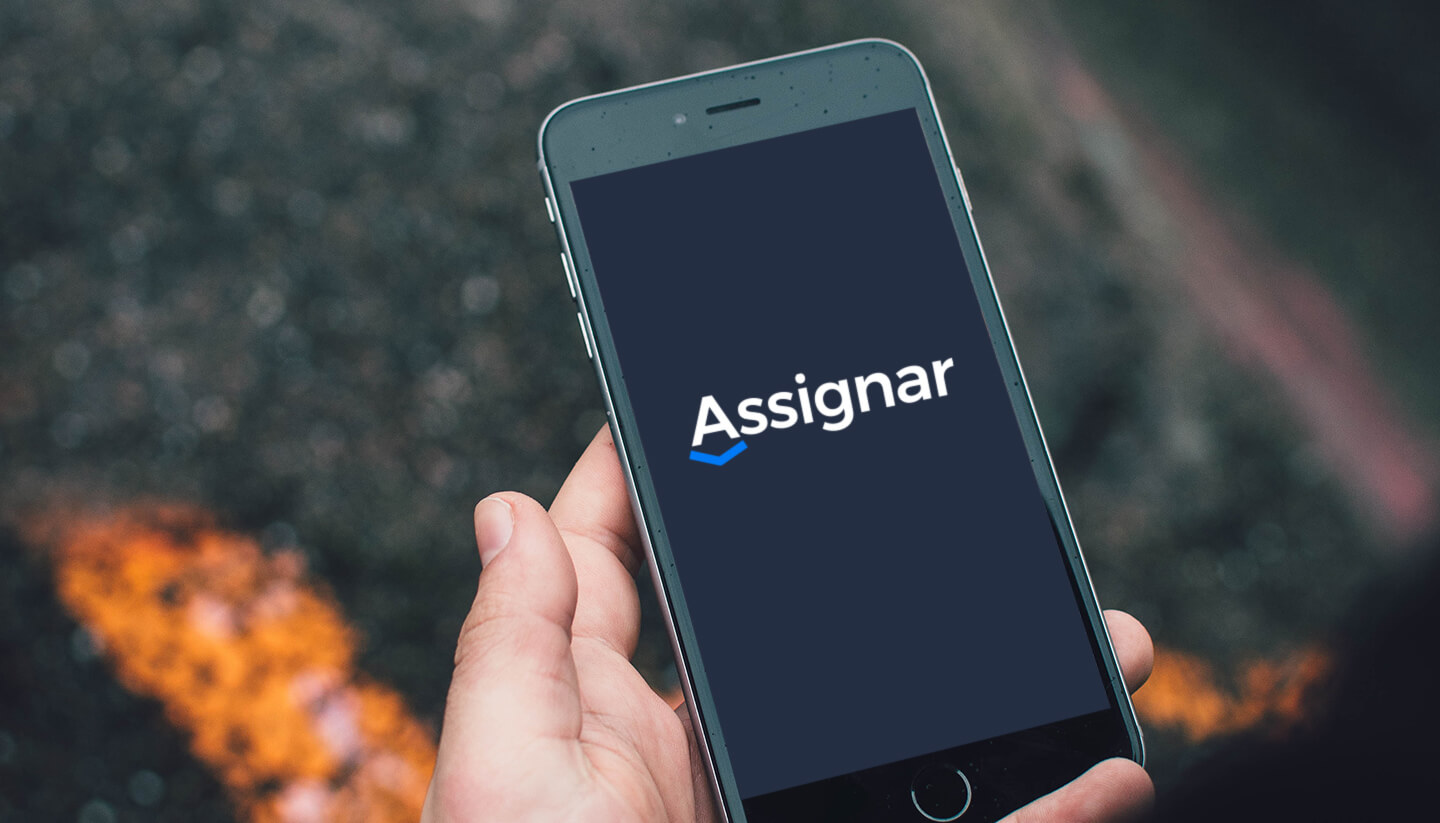The Modern Whiteboard
Whiteboard warriors: It’s time to put down the marker.
Construction is rooted in tradition. Trades and skills passed down over generations create a backbone for the industry. The administrative side is no different. Since the beginning, you learned how to make the business work with traditional tools, like paper, spreadsheets, and whiteboards.
After all, you only fix what’s broken—and whiteboards work, right?
They’re easy to see, easy to change, and most importantly, easy to use. Plus, there’s no learning curve. Whiteboard warriors—enthusiasts in charge of ensuring the boards are always up-to-date—spend hours writing, erasing, and rewriting to keep operations running smoothly.
Yes, whiteboards work. But as the construction industry, and the world, face supply chain hold-ups, retention challenges, and labor shortages—you have less time to waste, smaller margins, and fewer people in the office than before. What if we told you there’s a way to keep the whiteboard workflow while also saving time? At Assignar, this is how we see the digital platform: the modern whiteboard.
"A whiteboard gives perfect visibility of what’s going on in a company. The only downside, of course, is that it’s on a wall," says Marcel Broekmaat, CPO at Assignar.
Whiteboards and Spreadsheets Reign Supreme
How many whiteboards do you have? Walk into any back office and you might see walls filled with them: one per job, a few for long-range planning, lists of available equipment, certifications, available trades, etc. It’s not unusual to have 20 or 30 feet of whiteboards across every available wall space.
It’s for a good reason, too. Traditionally, whiteboards are the keystones of project management. Office administrators and project managers use them to schedule jobs, assign teams, and plan work down to the hour. Between specialized boards, markers, post-it notes, and magnets, teams can make whiteboards work for almost any use case. Yet sometimes they fall short.
Work planning is more complicated than it looks
Matching the crewman with the certifications and experiences needed to do the job well with just a spreadsheet, a whiteboard, and someone’s memory is hard. It’s not as simple as who’s available. You need an understanding of everyone’s skills, certifications, and past project experience. You’re not just looking for a crewman certified to use an excavator; you’re looking to see if they’ve used an excavator on an interstate project in a downtown area.
Right now, this information is living in your project manager’s head. It’s not visualized on the board, which leads to:
- Human error
- Mismatched projects and crews
- Project delays
And what happens when the one person with the information is unavailable? Projects just don’t get assigned. It’s not easy for someone else to pick up the slack, and it makes onboarding an exercise in memory recall.
The back offices are disappearing
Whiteboards work well when they live in a central office that everyone accesses on a regular basis. But offices aren’t the center of business anymore—the pandemic saw to that. When offices closed in March 2020, whiteboard warriors were suddenly cut off from business-critical information.
Even though work has returned to normal, offices still aren’t the center of a construction business’s world. Decision-makers are spread out, working from home, across job sites, or in satellite offices. Whiteboards aren’t being updated and referenced as much as they used to be.
Marcel Broekmaat, CPO at Assignar, knows the value—and drawbacks—whiteboard scheduling can have.
“A whiteboard gives perfect visibility of what’s going on in a company,” he said. “The only downside, of course, is that it’s on a wall.”
You simply can’t take a whiteboard with you onto the job site. Sure, there are workarounds. You could take pictures and send them to your team or copy the information into a spreadsheet, but that takes time you don’t have.
You can’t afford to waste human capital
These problems become especially critical during a labor shortage, like the one currently squeezing the construction industry. At every point in your project, you have to ask if you have the right people, doing the right activity at the right times, and using the right equipment.
Plus, with increased costs and decreasing margins, preserving resources (i.e., people and time) is your top priority. Frankly, you can’t afford to sink administrative resources into making old processes fit your changing business.
That’s where whiteboards and spreadsheets reach their limit. That’s the signal to put down the marker and adopt the modern whiteboard: an operational platform built for the construction industry.
Decision-makers are spread out, working from home, across job sites, or in satellite offices. Whiteboards aren’t being updated and referenced as much as they used to be.
What you love about whiteboards—but digital
There’s no replacement for how easy it is to use a whiteboard, but technology can get you pretty close. Most software geared toward the construction industry doesn’t get it. They want you to change your processes, add new devices to your collection, or spend hours learning a new platform. That’s just not realistic.
Tablets, laptops, and hybrid devices may work for the office, but they don’t have a place on the job site. They don’t fit in your back pocket. Plus, scheduling and planning are nuanced. You do it differently than Joe and Jane on the job site down the street, so finding software that works for your unique business is a struggle.
That’s why Assignar meets contractors where they’re at—it takes what you do and translates it into the digital world. You can track all the same things (workers, projects, equipment, etc.) from anywhere and save time doing it.
What you unlock with the modern whiteboard
Assignar takes all the aspects of a good whiteboard system and makes it easier to access, faster to use, and unlocks insights into the construction business.
The same project planning, but faster
With construction software like Assignar, project planners can do everything they do with spreadsheets and whiteboards, but faster. Matching jobs to crewmen with the certifications, skills, and availability is as easy as dragging and dropping—and it can happen in almost half the time.

Plus, readying the crew for the job takes far fewer calls, text messages, and emails. Once you’ve selected the contractors (and they’ve accepted the job), they’ll get a link with all the pertinent information. You’re not second-guessing if they’ll show up to the right job site or mix up the schedules sent over several emails. You have their confirmation that they’ll be there and they have the information they need to make it happen.
Preserve scarce resources (like your people)
There are many added benefits that come with having smart software to support you. For example, you can use built-in recommendations to ensure you don’t waste scarce labor resources—or lose them completely. Sean McCreanor, Assignar CEO, advises construction managers to keep retention top of mind; in the current labor shortage, contractors have no problem finding work.
“If you don’t manage that utilization and you don’t keep the workers and crew busy, they can go get work elsewhere almost with a single phone call,” he said.
When you harness the power of a digital platform, adjusting work schedules becomes infinitely easier. Weather delays, equipment breakdowns, and material shortages all wreak havoc on your work schedules. With a digital operations platform like Assignar, you can make these changes in real time (without having to erase, rewrite, or move magnets and post-it notes) and communicate these changes with your team in real time.
Ditch the rearview mirror approach
Does this feel familiar to you? You’re watching labor and material costs throughout a job, but you don’t know whether it’s profitable until it’s done. Or, you can tell if you made money last month but not if you’re going to make it this month. Sometimes, you might find that you’re losing money on a project—but by then it’s too late. You can’t do anything to fix the problem because it’s difficult to forecast and make proactive operational decisions.
Assignar gives you a more holistic view of your business using real-time data. Now, you can track productivity with reports from the job site, monitor equipment maintenance schedules, and ensure teams are scheduled to maximize their work and availability.
“You just can’t do it with multidimensional spreadsheets and whiteboards,” McCreanor says.
Not only does a digital platform shift your focus forward instead of backward, but it also gives you a competitive advantage when bidding for a job. Instead of committing to dates with little planning, a digital operations platform lets you create schedules and actually show them to the client. You’ll not only have a plan ready to go for when you get the job, but you’ll also earn their trust and demonstrate an extra level of professionalism.
The digital age is coming to the construction industry
If it’s not broke, don’t fix it. While that mantra may have kept the construction industry from embracing digital transformation, big things are coming. Maybe it doesn’t start with an overhaul of your entire way of doing business. Maybe it starts with a modern whiteboard.
Looking ahead, there are many opportunities to digitize construction processes, from workflows to supply chain management to logistics planning. Wouldn’t it be nice to get materials when you need them, and not so early they take up valuable space on the job site or so late that they cause delays?
That’s just the beginning. Between sensors, 360-degree cameras, drones, and more, the industry is about to have access to data they’ve never had before. That means you’ll get to make faster and more informed decisions about every aspect of the construction business. Get ready.
Start with a modern whiteboard and do more with less. Schedule a demo today.





